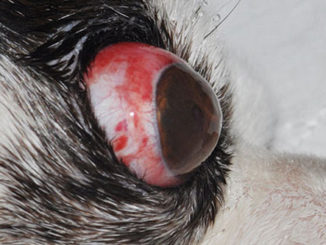Abstract
Frequency of tick vectors, tick-borne haemoprotozoan diseases (TBDs) are most common in tropical and subtropical locations around the world. Babesiosis, Hepatiozoonosis, and Trypanosomiasis are the most common haemoprotozoan that infect dogs. Anorexia, lethargy, anemia, icterus and in severe situations, death are common clinical manifestations in affected dogs. The affected dogs’ hematological profile indicates changes in blood cell counts, such as thrombocytopenia and neutrophilia. The epidemiology, etiology, and several diagnostic techniques such as microscopic exams, serological, and molecular nucleic acid-based tools as diagnostic aids for the detection of these common haemoprotozoan diseases in dogs.
Introduction
Dogs, like other animals, are susceptible to a wide range of infections and disorders. They have bacterial, viral, parasitic, and other illnesses. Various types of ecto and endoparasites afflict both stray and pet dogs. Ticks are the most common ectoparasites, sucking blood and causing anemia, discomfort, and annoyance in dogs, as well as acting as vectors for the transmission of numerous fatal diseases. Because of their extreme pathogenicity, haemoprotozoan infections are one of the most important tick-borne diseases. Because of the great frequency of tick vectors, tick-borne haemoprotozoan diseases are most common in tropical and subtropical locations around the world. Among these, Babesiosis, Hepatozoonosis, and Trypanosomiasis are the most common haemoprotozoan diseases in dogs. Anorexia, lethargy, anemia, icterus, and, in severe situations, death are common clinical signs in affected dogs. This paper depicts in detail the diagnostic approaches like microscopic examinations, serological and molecular nucleic acid-based tools as the aid for diagnosis of haemoprotozan diseases and their control strategies in dogs.

Prevalence of Haemoprotozoan Infection in Dogs in India
Several investigations on the frequency of canine babesiosis in India have been conducted by a variety of researchers. Only 0.1 percent of canines in Chennai were found to have the Babesia gibsoni infection microscopically (Sunder et al, 2004). Both B. vogeli and B. gibsoni are co-endemic in India, and the ticks Rhipicephalus sanguineus and Haemaphysalis longicornis are thought to be the vectors of both species (Rani et al, 2011). Stray dogs (13%) have a higher prevalence than pet dogs (9 percent). According to Godara et al. (2010), the overall prevalence of haemoprotozoan infection in dogs is 16.39 percent, with Babesia spp. (13.1 percent) and Ehrlichia canis (7.3 percent) being the most common (4.9 percent). B. gibsoni infection was the most common haemoprotozoan infection in dogs, accounting for 56.65%, followed by E. canis (23.21%) and H. canis (23.21%). Only 5.54 percent of dogs had B.canis infections, according to the findings. Using molecular diagnostic techniques such as polymerase chain reaction (PCR), Laha et al (2014) discovered that 48.64 percent of dogs were infected with B. Gibsoni and 54.05 percent of dogs were B. canis positive. Using Giemsa-stained peripheral thin blood smears, Singh et al (2014) found an overall frequency of 7.47 percent canine babesiosis in Ludhiana, Punjab, with 0.93 percent B. canis and 6.54 percent B. gibsoni. Das et al. (2015) investigated the prevalence of canine babesiosis and discovered a 31.86 percent prevalence, of which 94 percent was due to Babesia gibsoni. Furthermore, the incidence of babesiosis was shown to be higher in females throughout the months of May and June. Furthermore, when comparing dogs under one year of age to dogs over one year of age, the frequency was higher (17.07 percent) (9.37 percent). In addition, males were found to have a higher incidence (12.32 percent) than females (8.68 percent). Summer had the highest proportion of incidence (14.55 percent), followed by wet (10.06 percent) and winter (10.06 percent) (5.92 percent). T. evansi was found in 4.68 percent of canines in Ludhiana, India, exclusively during the wet and post-rainy seasons, according to Singh et al (1993). Babesiosis, hepatozoonosis, and ehrlichiosis are the most common arthropod-transmitted diseases in India, according to Jadav et al (2011). In 39 percent of patients, multiple TBD pathogens were present at the same time.
Diagnostic Approaches for Canine Haemoprotozoan Diseases
Because of the decreased incidence rate and sensitivity in the chronic and sub-clinical stages of infection, routine identification of canine haemoprotozoan via blood smear testing is typically challenging. In low parasitemic cases, however, the presence of vectors (ticks), symptoms, and a quantitative buffy coat smear stained with acridine orange may assist the diagnostic approach. Due to greater parasitemic conditions, diagnosis by microscopic inspection of Giemsa stained thin blood smears or buffy coat smears will suffice for hepatozoonosis and Trypanosomiasis. The immunofluorescent antibody test for antibodies in the serum that react with Babesia organisms is one of the serological tests that can be used to help in diagnosis. However, cross-reactive antibodies and the least detectable antibodies in some infected animals, particularly young pups, make it difficult to differentiate between species and subspecies. This can be avoided by using a molecular (PCR-based) test to detect Babesia DNA in biological samples. Conventional PCR, PCR with RFLP, RAPD-PCR, and Multiplex PCR are some of the most simple and sensitive molecular diagnostic procedures that may assess a large number of samples in clinical and environmental samples. Loop-mediated Isothermal Amplification (LAMP), a simple and sensitive approach that uses additional loop primers to boost efficiency and speed, has recently been created. Visual detection of amplified products and turbidity monitoring is possible using the LAMP approach and fluorescent dyes like Syber Green.
Microscopy-based diagnosis
Microscopy is still a well-established, easy, low-cost, and direct approach for parasite identification. When evaluating a high number of samples in a short period of time, however, is exceedingly time-consuming and labour intensive. In addition, skilled workers are necessary for proper parasite diagnosis. Blood smears are made and stained to identify the various stages of parasites circulating in the bloodstream for haemoprotozoan diagnosis. Wet smears can also be used to diagnose Babesia spp., Trypanosoma spp., Hepatozoan canis, and Ehrlichia canis. The commonly used Romanowsky-type stains like Giemsa stain, Wright’s stain, and Leishman stain give the best results and are routinely used in the diagnosis of Babesia spp., Trypanosoma spp., Hepatozoan canis, Ehrlichia canis.
Depending on the time and purpose, two types of blood smears are used:
a) Thin blood smear: Useful for studying morphological changes in blood cells and blood parasites.
b) Thick blood smear: It contains 6 to 20 times as much blood per unit area than thin blood smear. Usually suited for rapid diagnosis of parasitaemia that is too low to be detected with thin smears.
c) Buffy coat method (BCM): It is a concentration technique based on blood centrifugation and the resulting separation of blood cells and parasites in different layers. It is a useful tool for diagnostics of blood parasite
Serology-based diagnosis
Serological assays are indirect diagnostic assays which include tests either used for detection of antibodies or antigens. These assays are extensively used to diagnose parasitic diseases, at the screening level, for both surveillance and research. The development of serology-based techniques has improved the diagnosis of blood-borne protozoan infections.
Among the various serological tests, most commonly used includes
- Complement fixation test (CFT)
- Indirect fluorescent antibody technique (IFAT)
- Enzyme-linked immunosorbent assay (ELISA)
Less frequently used tests include
- Latex agglutination
- Capillary agglutination and
- Card agglutination
Mostly they are based on the reaction of antibodies with antigenic parasite components (whole or soluble) resulting in antigen-antibody complexes which are detected by the addition of antiglobulins coupled to fluorescein and rhodamine dyes, radioisotopes or enzymes.
- Complement fixation test (CFT): It is an immunological test for the detection of antibodies or antigens for a variety of blood borne parasites. CFT uses sheep red blood cells (RBC) as an indicator system in which a positive test revealed that the complement is bound to the antigen-antibody complex and is not free to interact with sheep RBCs which in turn settle to the bottom of the well forming a button shape.
- Indirect fluorescent antibody test (IFAT): In an IFA assay, known antigen from the parasite is fixed on a slide, to which serum from an infected animal is added. IFAT has been used for the diagnosis of babesiosis and trypanosomosis. IFAT has also been recommended by OIE as one of the diagnostic test for theileriosis. This test is fast, relatively cheap, easy to detect and highly sensitive.
- Enzyme-linked immunosorbent assay (ELISA): ELISA is a plate based immunological assay for detecting and quantifying soluble substances such as antibodies, antigens, proteins and glycoproteins in biological samples. It is widely used as the basis for epidemiological surveys and for evaluation of vaccination programme.
- Molecular-based diagnostics
The use of nucleic acid (DNA/RNA) probes in the diagnosis of parasitic infections is based on the evidence that every organism carries unique DNA or RNA sequences which differentiate it from other organisms.
Polymerase chain reaction (PCR)
The PCR makes it possible to perform selective amplification from complex genomes. This technique utilises heat for denaturing a double-stranded genomic DNA template, them the temperature is lowered to ensure that primers can anneal to their complementary sequences into the template. The detection sensitivity of PCR is higher than that of light microscopy; therefore, this technique is useful for detecting a low number of parasites in samples.
Role of vectors in the transmission of haemoprotozoan diseases and their control strategies
Elimination of the vector need not totally eliminate the infection but will only reduce the incidence rate. Broadly, five factors influence the process of dissemination and establishment of the disease.
- The manner in which the agent is released from the vertebrate host
- Mode of vector infection
- Course of infection in the vector
- Manner of release of the pathogen from the vector
- Combination of circumstances required for infecting the vertebrate host.
The transmission of pathogens by vectors is also, profoundly influenced by a no. of other parameters like
- Vector density
- Population density of the host
- Environmental conditions
- Spectrum of pathogen susceptibility of the vector
- Geographic distribution of specific species and sub-species of the vector
Such knowledge will immensely help us in understanding vector-borne diseases and in designing strategies for their control.
Many a time constant use of pesticides has led to its inefficacy and there has been a serious problem of pestilence in livestock farms and in human dwellings. This has more and more prompted the consideration of alternate methods of control such as biological, genetic and other methods.
The vaccines developed against Theileria, Babesia and Boophilus in order to combat vector borne disease either the parasites or the vector should be controlled. It is generally believed that vector control is more appropriate.
The control of vectors faces two important challenges namely –
- Development of resistance to insecticides and pesticides
- Environmental pollution
Therefore it is desirable to have alternate strategies, which do not involve resistance among the vectors. Genetic control or autocidal control is one such method.
Treatment with various drugs to reduce or eliminate ectoparasites is therefore often required to maintain health and to prevent economic loss
Accurate identification of the parasite or correct diagnosis based on clinical signs is necessary for selection of the appropriate drug. The selected agent can be administered or applied directly to the animal, or introduced into the environment to reduce the arthropod population to a level that is no longer of economic or health consequence.
- Anti – Adult measures
- Anti larval measures- Such techniques have been extensively used for the control of insect vectors of diseases, insect of veterinary importance
Pyrethroids –A pyrethroid is an organic compound similar to the natural pyrethrins produced by the flowers of pyrethrums (Chrysanthemum cinerariaefolium and C. coccineum). Pyrethroids now are the main commercially used insecticides
Macrocyclic Lactones (Avermectins and Milbemycins): Avermectins and the structurally related milbemycins, collectively referred to as macrocyclic lactones, are fermentation products of Streptomyces avermilitis and Streptomyces cyanogriseus, respectively. These compounds are active against a wide range of nematodes and arthropods and, as such, are often referred to as endectocides.
Broad-spectrum—systemic insecticides, have a rapid action (minutes-hours). They are applied as sprays, and drenches -often as substitutes for organophosphates and carbamates. Treated insects exhibit leg tremors, rapid wing motion, style withdrawal, disoriented movement, paralysis, and death.
Ryanoids: Ryanoids are synthetic chemicals with the same mode of action as ryanodine, a natural insecticide extracted from Ryania speciosa (Flacourtiaceae). They bind to calcium channels in cardiac and skeletal muscle, blocking nervous transmission.
Insect Growth Regulators (IGRs)- Many IGRs are labeled “reduced-risk” by the Environmental Protection Agency, meaning that they target juvenile harmful insect populations while causing less detrimental effects to beneficial insects.
Ectoparasiticides that act systemically may be given parenterally or applied topically to the skin, where the active ingredient is absorbed percutaneously and taken up into the circulation. Many of the endectocides are now available as-
- SC or IM injections
- Pour-on preparations act systemically.
- Dusting powders have been widely used for the topical treatment
- Impregnated devices include ear tags, tapes, bands, and collars
Pour-on treatments are usually applied along the backline of an animal or at a single spot on the shoulder blades using a specially designed applicator.
Major alternatives to conventional acaricide treatments have been developed in recent years. Among the most important are various vaccines that have been commercialized for release to the agricultural community, including recombinant vaccines against midgut surface antigens, Tick GARD and GAVAC. Unfortunately, the efficacy of tick control has not reached the levels that the inventors had hoped to achieve.
Conclusion
The existence of related vectors, which are most common in tropical and subtropical areas, is generally required for haemoprotozoan parasite infection in the livestock population, including dogs. Managing these diseases might be challenging in some places. Routine blood smear examinations, frequent serological and molecular nucleic acid-based testing to diagnose these diseases, as well as appropriate chemotherapy, may lower the risk of infection in companion dogs.
References
- Das, M.K., Baidya, S., Mahato, A., Pandit, S., Ghosh, J.D., Chaudhuri, S and Das, M. (2015). Incidence of canine babesiosis in and around Kolkata, West Bengal, India. ExplorAnim Med Res,5(1): 102-107.
- Godara, R., Sharma, R.L., Sharma, C.S. and Sharma, D.K. (2010). Parasitic infections in dogs in semi-arid Jaipur (Rajasthan).J.Vet.Parasitol.,24(1):83-86.
- Jadhav, R.K., Kumari, R.R., Jameel, A.J. and Kumar, P. (2011). Emergence of arthropod transmitted infections in kennel dogs. Vet.World,4(11):522-528.
- Rani A.P.A., Irwin P. J., Coleman G. T., Gatne M., Traub R. J. (2011). A survey of canine tick-borne diseases in India. Parasit. Vectors. 4, 141.
- Singh A., Singh H., Singh N.K., Singh N.D., Rath S.S. (2014). Canine babesiosis in northwestern India: Molecular detection and assessment of Risk Factors. Biomed Res. Int. 11, 1-5.
- Singh, B., Kalra, I.S., Gupta, M.P. and Nauriyal, D.C. (1993). Trypanosomaevansiinfection indogs: seasonal prevalence and chemotherapy. Vet.Parasitol., 50(1-2):137-141.
- Sundar, N., Balachanran C., Senthilvelan A. (2004). Incidence of Babesia gibsoni infection in dogs in Tamil Nadu. J. Vet. Parasitol. 18, 79-80.







Be the first to comment